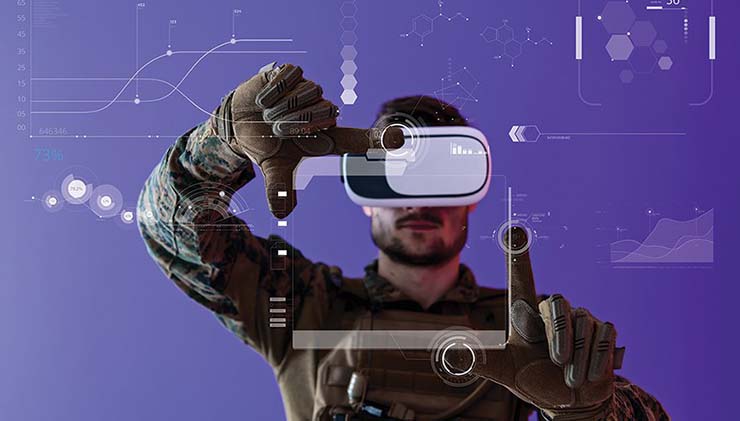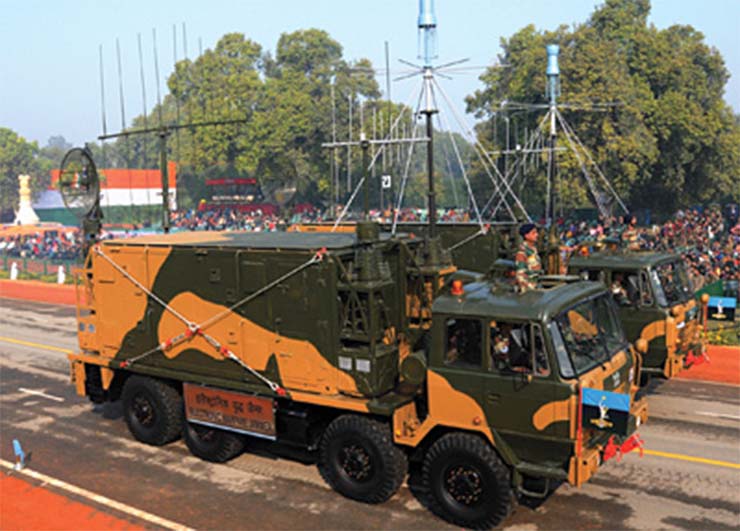
There is always an optimistic belief and a strong desire that Indian Research and Development agencies for defence systems lead by DRDO are delivering. On the contrary, CAG report of Dec 2023 highlights the long delays in projects completion and failure to achieve key parameters. 67% of the projects got delayed. Of these 41% had delays of more than 100% of contracted time. The delays ranged from 15% to 500% of time and money, both. This is not a healthy picture.
It has also been reported that many tactically important projects that were successfully initiated, had to be banned from usage in operations / exercises as they included modules manufactured in a “country of concern”. This has led to cost and time over runs in R&D and Production.
Ironically, Indian diplomacy is not accepting a stark reality that at present and for another decade in future, only the production capacity of China can meet large demands of electronics components worldwide, and will continue to add to the woes of both R&D and production units alike. One must strike a balance between security and demand and supply. This of course is a big security challenge, for everyone.
Western countries still continue to depend on China for electronic components. Even a purchase from western supplier isn’t a guarantee of “No Chinese Component”. COVID followed by Ukraine war has highlighted the strategic importance of Electronics System Design and Manufacture (ESDM). India has taken steps to urgently enhance its ESDM capability of niche electronic chips.
Most modules ranging from sensors, power systems, motors, home appliances, audio-video systems are all IoT enabled. IoT adds vulnerability and security issues. Till a robust ESDM base is built, India needs to work-out a realistic fast track plans to Adopt Technology through customisation where it could innovate first and import where inescapable.
While doing so we need to realise that digitisation is not only inescapable but urgently needed. Adaptability and collaborative approach involving all
stakeholders is the path out of this maze.
In 2022 India was ranked 40th in Global Innovation Index (GII). So let’s have a realistic look at the strategy needed for India to be amongst the first 10 in Global Innovation Index by 2030.
Modernisation Theory
Modernisation Theory was propounded in 1950s and 60s. The yardstick for measure was primarily sociological factors and was influenced by Karl Marx and Talcott Parsons, a Harvard sociologist. The main assessment criterion for modernisation was the scale by which a traditional society would transform into a modern society (westernised). Fascination for Westernised societies continues to influence Indian measure of modernisation. However, in 21st century, Technology could be one of the most important influencers in the modernisation process.
GDP is an important factor that governs innovation. Ease of living, Happy-Healthy and educated society is important for a nation’s growth. General public expects its personal and societal needs to be met. Governments, have no option but to need to strike a balance between budget allocation for defence and security and other sectors.
Dual use technology offers solutions that meet the commercial and societal as well as defence needs. Innovation in Dual-use Technology is proving to be the most optimum path to balance national budget for defence and society. Modernisation Theory of the 21st century is governed by innovations and GII. Its important verticals are Human Capital & Research, Knowledge & technology output, Market & Business Sophistication, Creative Outputs, Institutions and Infrastructure. Even the Defence Forces operate under the influence of the Modernisation Theory. Indian Armed Forces and Defence R&D and Production agencies need to be more participative – invest in GII verticals and efficiently and optimally utilise the defence budget.

Modernisation in Context of Indian Armed Forces
Indian Armed Forces had an ambitious plan to improve their operational effectiveness through Network Centric Operations and automation. Many Projects like Tac C3I of Army, NCO of Indian Navy, AFNET, IACCS, IMMOLS of Indian Air Force and many more strategically classified projects were designed, developed and started. These projects had 20th century technology and designs. Substantial delays in some of the projects led to their technology obsolescence.
Rapid technology advancements in AI, Robotics, Block Chain, communications and virtualisation, miniaturisation, computing power now dictate how future wars will be fought. To avoid repeating the mistakes of the past a more pragmatic look has to be taken in Design, Development and Production of Defence Systems.
Some of the important factors and issues that need to be addressed are:
- Information Communication Technology interconnects all entities and provides a common platform and standards or protocols to communication and share information amongst each other. AI, block-chain, virtualisation are now integral part of the ICT eco-system. These are also the fastest developing technologies.
- Modern generation modules or sub-systems have growing software content (firm-ware or APIs). Lack of Tier 3 support from the IPR owner or OEM often results in failure to interface or interconnect various sub-systems even when ToT is offered. (Tadiran radios and CDMA Rev 2.0 mobile are such examples).
- Absence of ESMD compels one to import.
- ToT, though promised at the bidding and contract finalisation stage, is rarely passed on post contract.
- Indian defence systems have long operational life. It is mandatory for the Indian Production Agency (PA) or Development Agency (DA) to continue with R&D for product improvement post ToT. ToT has to be considered as a launch pad and a means to take the next step in system design and development. DA and PAs often neglect this.
- Even though Indian defence sector is #1 defence importer, the Battle for Barriers of Scales is a major limiting factor in Aatmanirbharta in Indian Defence Sector. Production Linked Incentive (PLI), though a game-changer in 2021-22 in certain specified sectors, has yet to impact the defence industry.
- To keep up with rapidly changing technology, OEMs focus on R&D and as a policy of out-sourcing of production lines to their trusted business partners. This offers an opportunity to attract manufacturing in India.
- Customisation of the sub-systems to meet Indian requirements is a quicker option to bridge the technology gap and to prevent it from widening further. It is of paramount importance that India shifts from self-certification stage to testing and verification labs in India. India has been following the system of self-certification since past decade-and-a -half. Inability to set up a test and verification facility also raises many questions.
Modernisation under Aatmanirbhar Bharat
Modern battles will be fought in digital space comprising AI, Cyber, robotics and smart software-defined Networks with virtualisation. Even the land and aerospace would be digitised into 3-D volumetric space through Volumetric Space Technology. (Meaning, the prevalent terrain features of sub-surface, surface, land, aerospace – aerial/ near-space/ space and all the entities present in it are depicted in a 3-D model). This digital space is complex and vast. No single company provides a solution that covers the entire spectrum of digital battle space. Consortium and collaboration partnerships between specialist firms provide a holistic integrated solution. Enterprises offering advanced state of the art solutions have spent a decade plus and billions of USD in product development. Many of these solutions are patented and IPR are generally not for sale. Under these circumstances the following needs to be analysed as a means to self-reliance:
- Time frame by which India will design and develop a niche chipset with relevant embedded software used in next generation communication systems – In next 5 to 10 years
- Due to the urgency to modernise is it viable in terms of time, finances and quality to reinvent niche high-end chipsets and processors or is it better to import the finished product from trusted source? Yes, better to procure from trusted source and speed up ESDM.
- We should ask OEMs (IPR holders) to provide source code for verification, including version upgrades and version uniformity (same version loaded in all systems active on the ICT infrastructure). As all modern systems have Internetwork Operating System- IOS that is a combination of logic/ algorithm hardwired in the IC, embedded firmware and software applications / APIs. Current capability precludes guaranteed verification / certification. Vulnerability Management mechanism narrows the window available to complete the verification and testing cycle.
- Isn’t executive code comparison a better option till Cyber Security Evaluation Centre (akin to Huawei Cyber Security Evaluation Centre of BT) is set up? Yes, it should be considered.
- Customisation vs. Innovation? Customisation should be for state of the art high-end systems, and Innovate for product improvement.
- Positive Indigenisation List MoD needs tweaking. Indigenisation list is growing primarily because the criteria of >50% Indigenous Content is easily met. The reality is, the core modules are imported along with its firmware and APIs. These form the core of any system.
Recommendations
We’ll have to adopt an evaluative formula on a case to case-to-case basis. An Indian firm has customised this MANET solution to meet Indian Defence and Homeland security requirements. Such niche technology will not be offered for ToT unless the scales are large enough. In such complex state of the art systems, Import of core module and customisation to meet Indian requirements is a viable solution both in terms of cost and time.
Similarly, Block-chain Armed Forces or AI is another scenario. India has skill sets and human capital in AI as well as block-chain. In such systems, innovation and indigenous solution is both viable and economical and have high success rates. These can be a mandatory criteria. MoD must enhance funding to innovators in these fields. Hopefully, the following recommendations can help in deciphering this quandary:
- ICT industry needs clarity in policies. This is important for them to enter into MoUs with OEMs that supply state of the art modules or sub-systems. Practical policies need to be formulated to facilitate regulated import of modules and components. Department of Foreign Trade and DIT should consider issuing a Positive List of Module and Component Imports.
- Indigenous module or sub-system that partially meet parameters should not be given precedence over an imported module that fully meets the specs. There should be no compromise in laid down parameters as well as security.
- In defence ICT and EW projects, combination of DRDO as R&D and DPSUs as production agency is the norm. Since R&D budget of DRDO doesn’t add on to the commercial bid by DPSU, they have an undue advantage in IDDM and Make-2 procurements. In addition to DPSU & DRDO consortium bid, DPSUs participate in individual capacity. This offers an undue advantage to DPSUs and should be done away with.
-The writer is a Signals veteran. He has vast experience in Electronic Warfare in CI/CT and conventional operations. He led the implementation of ICT infrastructure during test-bedding of Tac C3I systems of the Indian Army as a Director. He was Project Director, ASCON Phase-3 and as MoD Rep was involved in finalisation of NFS scope and budget. He holds PG in Computer Science from IIT Madras and PG in AI from Austin University, US.








